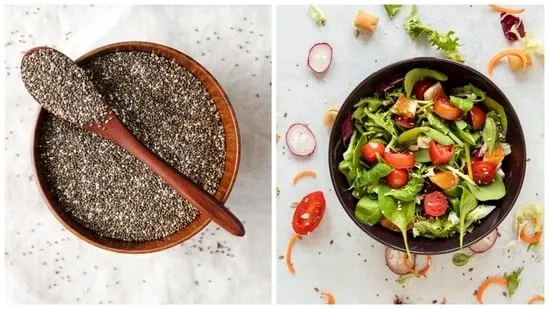NHS surgeon says ‘5g chia seeds gives 10x more fibre than 100g cucumber’; compares 22 foods: Tomato, watermelon, lentils
admin | September 8, 2025 4:22 PM CST

Do you eat cucumber, tomato, lettuce, salads, watermelon or apple in a day and think that your fibre component is complete? Well, you may be in for a surprise.
In an Instagram post shared on September 5, Dr Karan Rajan, an NHS surgeon and health educator, shared important information about the fibre content of some popular foods that people think are rich in fibre, but are really not.
'Not all fibre is equal…'
Dr Rajan shared a list of 22 fruits, vegetables, and seeds, comparing their fibre content, bursting myths about some popular foods that people think are high in fibre. He wrote, "Not all fibre is equal!"
Stating a few examples of how fibre-rich foods are not all the same, Dr Rajan explained how if you eat 100g of cucumber, you might think that's enough fibre. But having just 1 spoon of chia seeds gives you ten times more fibre.
Giving another example of lettuce, Dr Rajan pointed out how just half an avocado (6g) will give you five times more fibre compared to 100g of lettuce.
Similarly, eating a full plate of salad with lettuce, cucumber, and tomatoes will only give you 2.9g of fibre, but 100g of raspberries can give you about 6 g of fibre, which is over twice the amount of fibre as the salad.
Fibre content 101
Here are some helpful stats about the fibre content of different foods, as stated by Dr Rajan:
- Low fibre plants (per 100g)
- Fruits
- Good fibre hits (per 100g)
READ NEXT
-
The biggest spider in the UK is making a huge comeback - it's the 'size of a rat'

-
Gardeners urged to 'act now' by doing 3 things to save plants

-
Liver From Braindead Patient Saves Life In Bhubaneswar, 4th Case At SUM Hospital

-
Gujarat Assembly pays tribute to former CM Vijay Rupani, unveils portrait at Vidhan Sabha

-
Ethereum Price Prediction And One ETH Coin That Could Grow 8,000% By The End Of 2025
